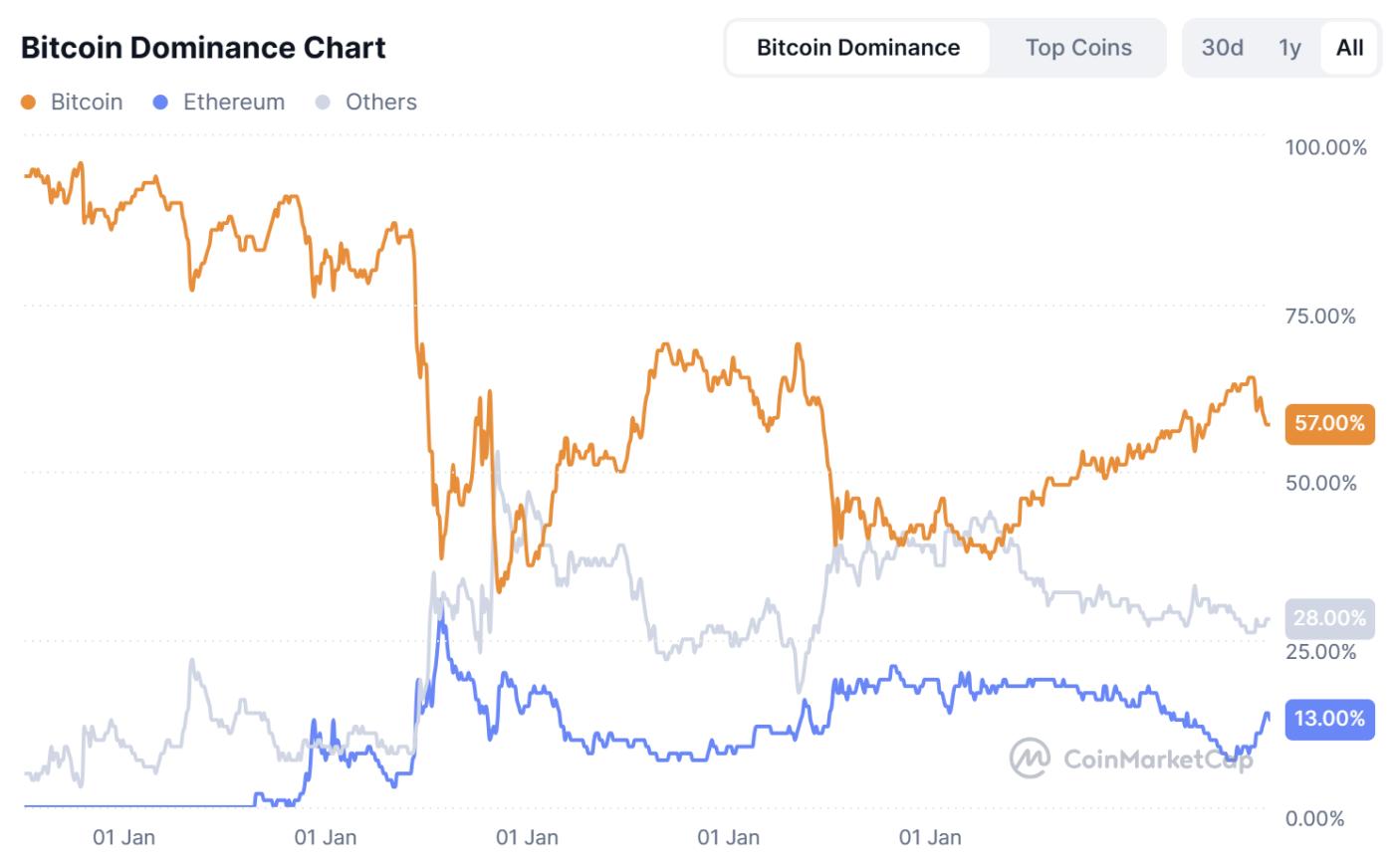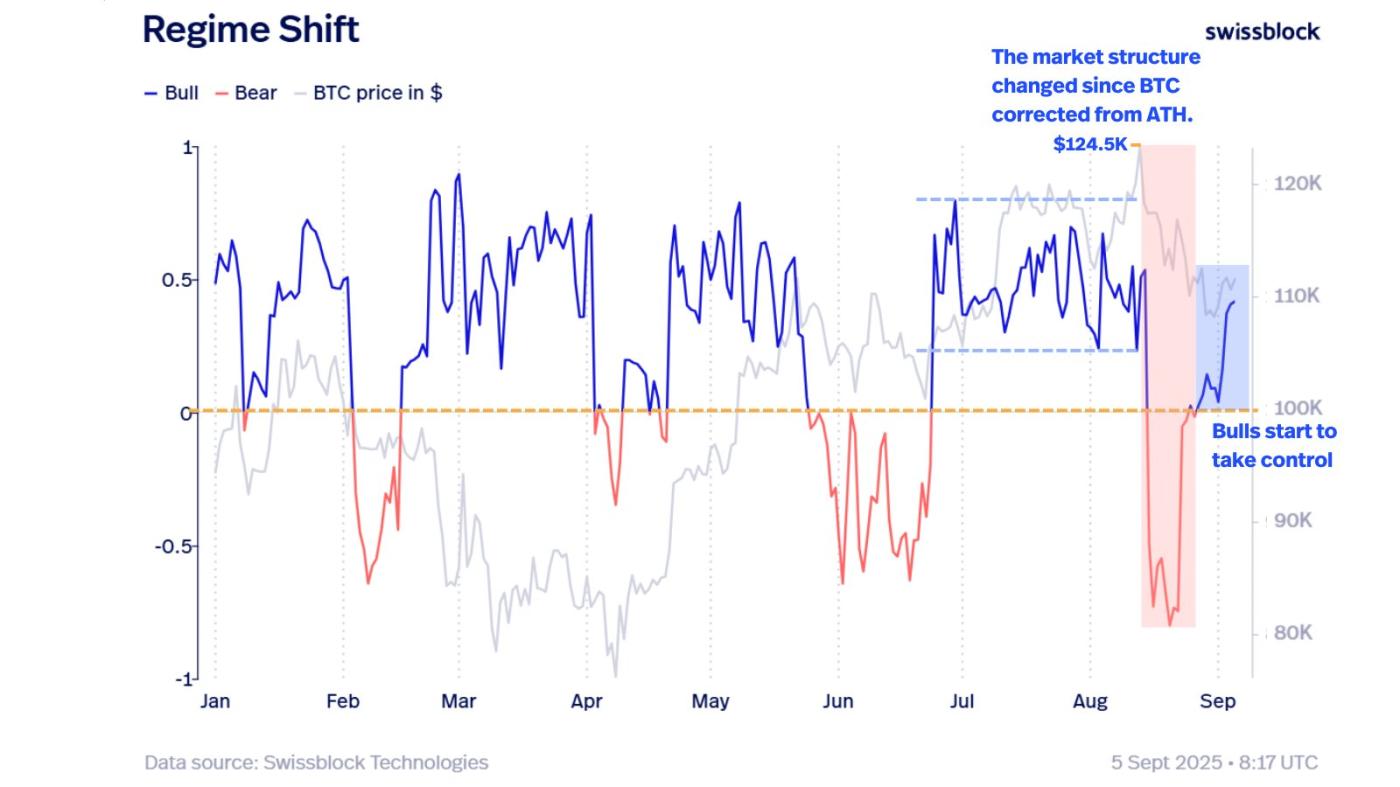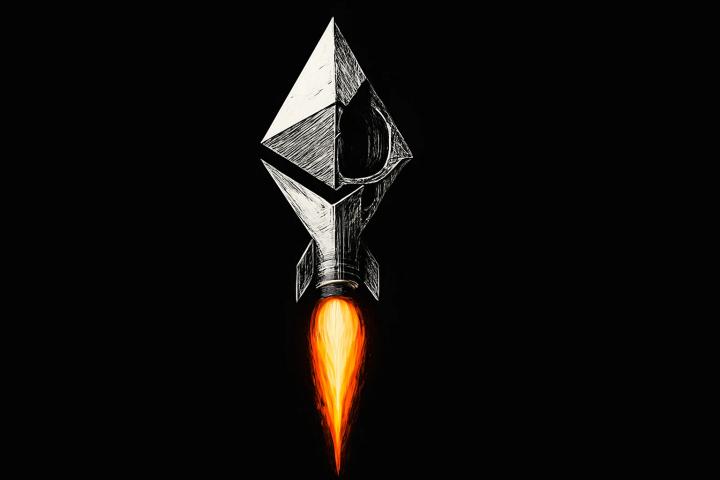Bitcoin currently maintains a bullish structure.
Written by: 1912212.eth, Forest News
Since BTC fell below $108,000, the market has been in a state of mourning, with pessimism about a bearish market spreading among retail investors. However, BTC has not yet experienced a significant decline following the breakout, instead rebounding above $110,000. On September 8th, BTC surpassed $110,000. ETH has also been consolidating and fluctuating around $4,300, with no clear direction emerging.
With the September seasonal curse and the Federal Reserve’s decision imminent, the market is asking how far Bitcoin can go? Will there be another altcoin season?
Differences in the concept of Shanzhai Season
In the cryptocurrency market, an "alt season" refers to a period when Altcoin generally outperform Bitcoin (BTC). This concept stems from market rotation: investors shift from Bitcoin to other cryptocurrencies in search of higher returns, leading to significant price increases for Altcoin and a typical decline in Bitcoin's dominance (BTC dominance, or Bitcoin's share of the total crypto market capitalization).
Specifically, the altcoin season is often described as a period of high volatility and high returns, during which many Altcoin may achieve several times or even dozens of times the increase, while Bitcoin remains relatively stable or pulls back.
Market participants often use the following indicators to determine whether an altcoin season has arrived: A decline in Bitcoin's dominance ratio: When this ratio drops significantly from a high level (e.g., above 60%), funds tend to flow from Bitcoin to Altcoin. Currently, BTC accounts for 57% of the market capitalization, yet an altcoin season remains elusive.

This is seen as a precursor to the altcoin season, as it indicates a shift in market attention toward more speculative assets. Secondly, it's driven by capital rotation and narratives: the altcoin season often occurs in the middle and late stages of a bull market, with retail and institutional funds shifting to Altcoin after Bitcoin breaks through its all-time high.
Core characteristics include a specific narrative (such as DeFi, NFTs, AI, or meme coins) dominating the market, leading to a "collective explosion" in related currencies. Finally, duration and performance: a typical altcoin season lasts 4-6 months, or even longer, and the total market capitalization of Altcoin(excluding BTC) may double or more. Historically, the ICO boom in 2017 and the DeFi/NFT frenzy in 2021 are classic examples.
There are significant differences in the crypto market's definition and judgment of the alt season.
- Disagreement over the precise trigger conditions: Some rely strictly on quantitative indicators, such as the Altcoin Season Index, which must exceed 75. Others, however, consider this too mechanical and ignore market sentiment; they prioritize a "sharp drop" in Bitcoin's dominance ratio over a gradual change. Does an altseason necessarily require "everything goes up," or does it only require a core narrative and a few Altcoin to explode? Many believe the latter is more realistic, as market saturation leads to dispersed capital.
- Disagreement over timing and phases: Some analysts believe alt seasons only occur after Bitcoin peaks, when profit-taking occurs. Others, in contrast, believe they can be independent of Bitcoin, triggering specific months (such as November to January). This disagreement has intensified during the current cycle (2024-2025): some debate whether we have already entered an alt season or whether it is merely an illusion, as institutional dominance and an oversupply of Altcoin could alter traditional patterns. For example, some argue that the traditional concept of an alt season is outdated, influenced by regulatory and macroeconomic factors.
- Differences in experience and subjectivity: Different groups have very different views on altcoin seasons. Newcomers may view a small rebound as an altcoin season, while veterans emphasize the need for "life-changing" returns. Pessimists believe that market maturation (such as ETF inflows) will make Bitcoin's dominance more sustainable and prevent a full-scale Altcoin boom.
What do the experts think about the future market trend?
Trader Eugene: Altcoin need BTC to break through upwards
Trader Eugene Ng Ah Sio once posted on his personal channel that he is not currently participating in market transactions, but he needs to explain (to his followers) that if you want to see substantial fluctuations in Altcoin, you must rely on Bitcoin (an upward breakthrough) to drive the market, but Bitcoin's current performance has not met the expectations of bulls.
Matrixport: Although Bitcoin is still in consolidation mode, its long-term outlook remains firmly bullish
Matrixport reported that gold has broken through the $3,400 mark, a key resistance level that has held back prices for the past four months. This rally occurred despite relatively modest monetary policy issuance, and forward-thinking investors are investing in both gold and Bitcoin. While Bitcoin remains in consolidation mode, its long-term outlook remains firmly bullish.
Bitfinex Alpha: The market is actually in the late stage of a correction, and the $93,000-95,000 range is expected to become the cyclical bottom of BTC
Bitfinex Alpha released a report stating that Bitcoin briefly fell below $110,000, extending the retracement from its all-time high of $123,640 to over 13%. Historical retracement patterns and seasonal trends suggest the market is in the late stages of a correction, with the $93,000–95,000 range potentially forming a cyclical bottom. On-chain data supports this: the current short-term holder realized price of $108,900 is becoming a key support level; a sustained decline below this level could further intensify downward pressure. Trading platform order flow indicators also indicate neutral spot market sentiment, reinforcing the view that buyers are holding off on the sidelines while awaiting stronger catalysts.
Altcoin performed even more weakly, reflecting a broad risk-off sentiment. Ethereum (ETH) retreated 14% after briefly hitting an all-time high, while XRP, ADA, and DOGE all experienced double-digit declines. However, institutional demand remained resilient beneath the surface, with ETH holdings continuing to increase by treasuries and corporate buyers. Mid-cap tokens such as CRO and PUMP outperformed amidst narrative-driven market activity, but this rotation was more at the expense of weaker assets rather than new inflows.
Sweissblock: BTC needs to hold $110,000 to gain upward momentum

Sweissblock tweeted that Bitcoin's price briefly dipped below $110,000 but is now testing the $112,000 range. Is this pullback a bear trap? Bitcoin maintains a bullish structure. The key is whether Bitcoin can not only hold onto this structure after this market volatility but also regain upward momentum to drive further gains.






